


Properties of nitrogen oxides
Many amateur chemists, and certainly those, who like to make energetic materials by means of nitration with nitric acid, know the brown gas NO2. Usually, this is a totally undesirable product, as it occurs in runaway reactions. This compound, however, it quite interesting on its own.
In this experiment, some NO/NO2 was made, by reacting a few ml of 52% nitric acid with 1.5 gram of copper metal. The gas mix, produced in this violent reaction, is passed to the bottom of a thick-walled glass bottle through a long cold thin glass tube, allowing most of the water in the gas mix to condense on the inside of the thin tube. Fairly dry NO/NO2 then is passed into the bottle. By keeping the glass tube at the bottom of the bottle, the air slowly is driven out and replaced by the NO/NO2 gas mix.
This gas mix looks as follows at room temperature:
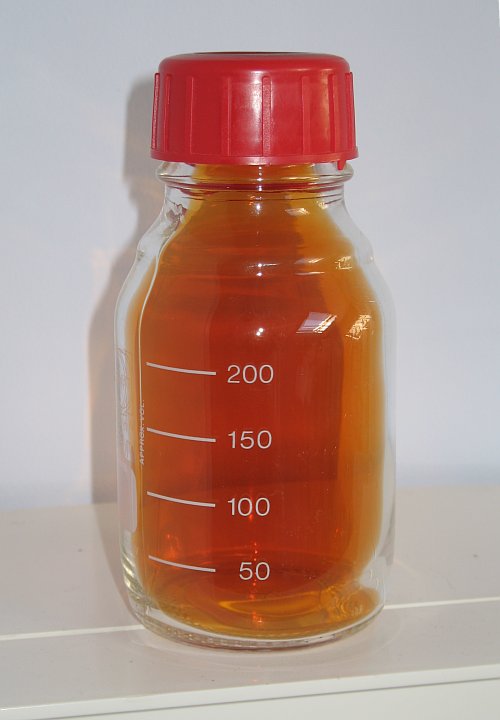
When the bottle is kept in boiling water for a while, then the color of the gas mix strongly darkens. The picture below shows the same bottle, after immersion in boiling water for a few minutes:
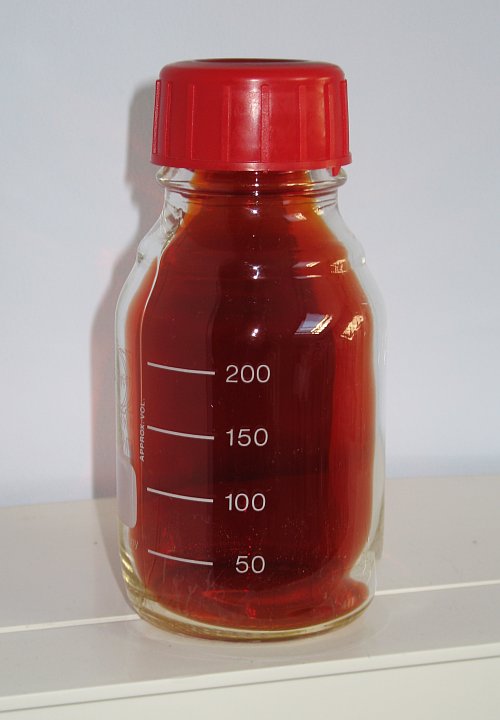
On cooling down, the gas mix becomes lighter again. This reaction can be repeated as often as desired, it is completely reversible. What happens is the following equilibrium:
N2O4 ↔ 2NO2
At low temperature, N2O4 is favored, at high temperature, NO2 is favored. The compound N2O4 is colorless, the compound NO2 has a strong brown color.
When the bottle is kept in a refrigerator at -15 ºC for some time, then the gas mix inside the bottle almost becomes colorless. The picture below shows the bottle, immediately after taking it from the refrigerator. The bottle has a matte appearance, due to the frost, which is formed on the bottle as soon as it is taken out of the refrigerator. But the picture nicely demonstrates that the gas mix has become much lighter.
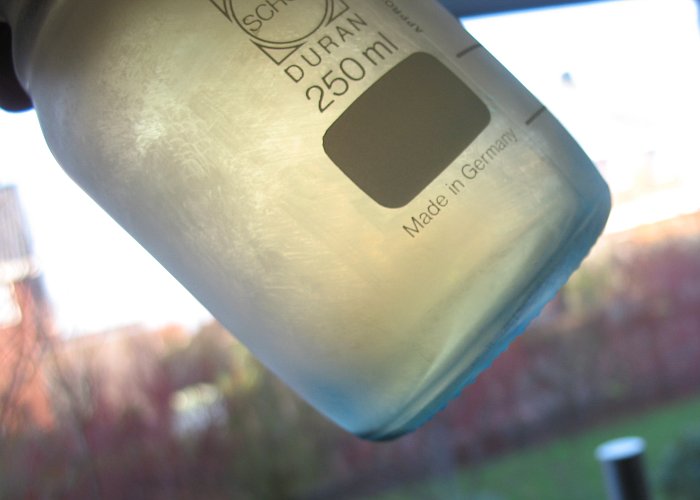
At the low temperature in the refrigerator, the gas mix even liquefies. A very dark blue liquid is formed, which can be nicely viewed, when the bottle is swirled around. The picture below shows the bottle with the gas mix and the blue liquid sticking at the glass. Still the bottle has a frosty appearance.
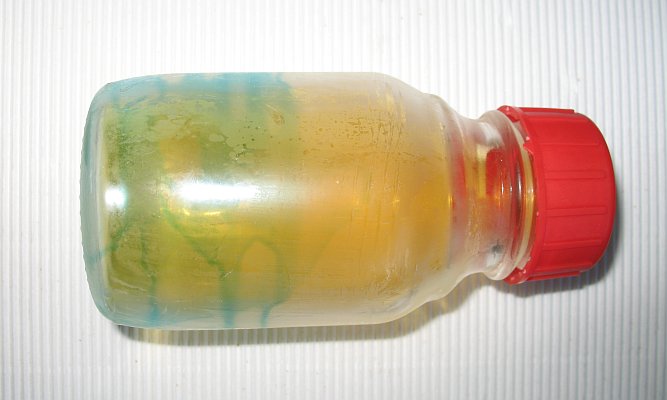
When the liquid is allowed to collect at the bottom, then one can see its dark color. It almost is black.
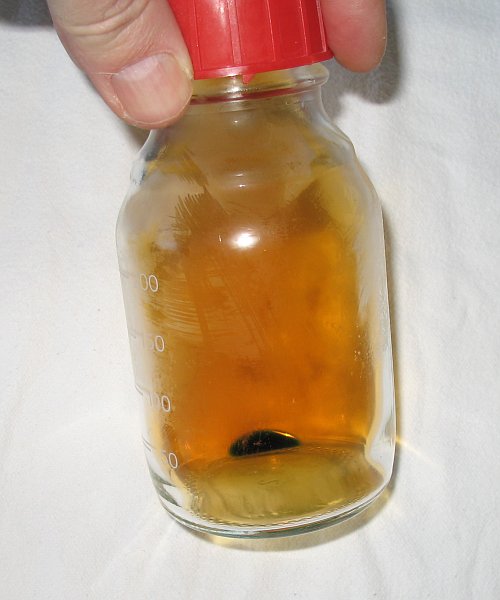
The pictures also show that the color of the gas mix in the bottle quickly darkens again, as soon as the bottle is taken out of the refrigerator. The dark blue liquid evaporates and gives more gas, and besides that, the rising temperature also drives the equilibrium between N2O4 and NO2 to the side of the NO2.
The deep blue color of the liquid is an indication of the impurity of the NO2, produced in this experiment. Pure NO2 would result in formation of almost colorless N2O4, which condenses as a colorless liquid. In this experiment, however, there also is quite some NO in the bottle, and this reacts with NO2 at low temperature to the deep blue liquid N2O3. So, the deep blue liquid most likely is a mix of N2O3 and N2O4.
On warming up to room temperature, all of the dark blue liquid evaporates and only the brown/red gas remains.